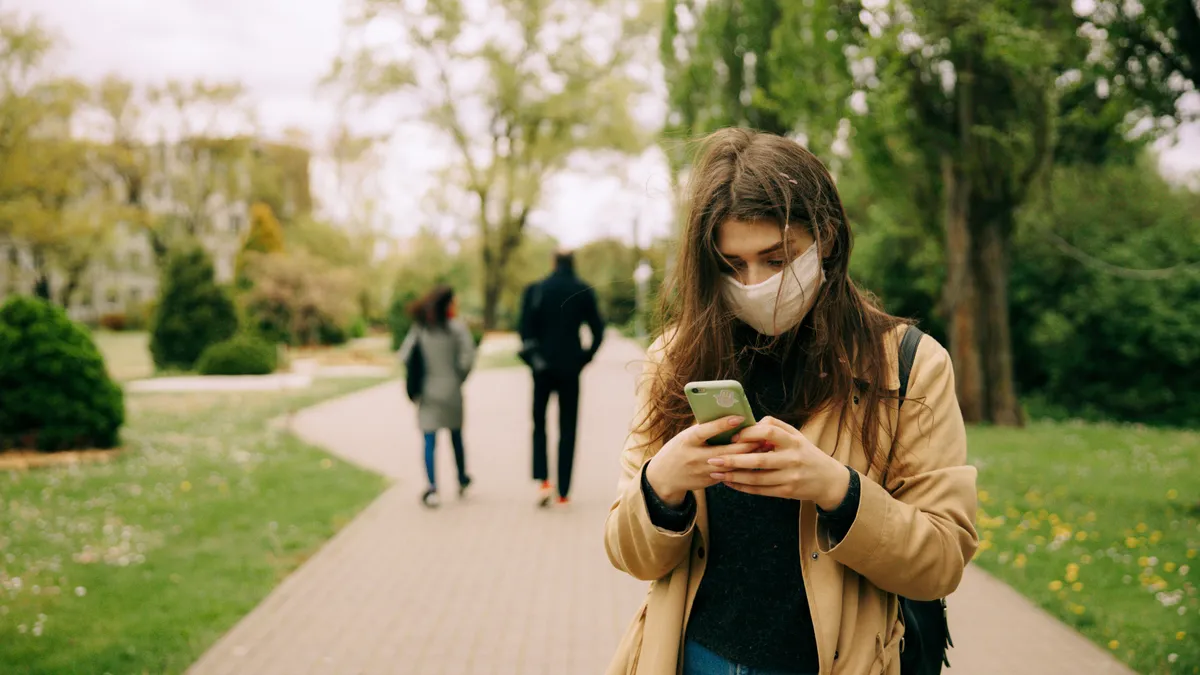The coronavirus dominated higher education headlines this year. But it wasn't the only topic we covered. We took a spin through our archives to spotlight a dozen stories that dig deep into some of the biggest trends at play over the last 12 months.
Amazon Web Services has been helping dozens of four-year colleges create cloud computing curriculum. While the relationships have raised questions about academic freedom, one thing is apparent: The colleges and AWS need each other. Read the full story: Why 4-year colleges are tapping Amazon to help deliver cloud computing degrees.
Think you can prevent students from hooking up during a pandemic? Think again, behavioral experts say. We asked them how colleges can increase the odds students will follow COVID-19 safety measures at a time in their lives when they may be compelled otherwise. Read the full story: Sex, masks and parties: Can colleges actually change student behavior?
Our team spent some late nights over a spreadsheet to figure out which colleges received loans through the Paycheck Protection Program. In addition to small and midsize colleges, auxiliary groups associated with large universities also got support. Read the full story: How colleges fared in the Paycheck Protection Program.
Reporter Natalie Schwartz headed to Texas to learn more about how community colleges are innovating to improve student outcomes and prepare learners for the local workforce. She visited South Texas College, which leads the state in dual enrollment, to see what other colleges can learn from its approach to preparing students for work or college-level study in fields where jobs in the region are plentiful. Read the full story: A visit to the community college leading Texas in dual enrollment.
An uptick in announcements from colleges saying they were working with online program managers to offer virtual degrees inspired a deeper look into how the pandemic was affecting those companies' business. Although experts agree OPMs will play a bigger role in bringing programs online, they disagree about the shape those relationships will take. Read the full story: Colleges look to OPMs as pandemic intensifies shift online.
As colleges temporarily dropped the SAT and ACT in droves, and the University of California System took bigger steps to shed the exams, Reporter Jeremy Bauer-Wolf asked whether the situation would quash the tests for good. What did he learn? Schools may continue to forgo the exams, but the ties between colleges and their makers will be difficult to cut for good. Read the full story: Is this the end for college admissions tests?
Traditional-age students are heading to all-online universities in larger numbers, accounting for small but significant pockets of growth in their enrollment, Schwartz found in a review of their enrollment data. She looked into what's driving the younger crowd to the likes of Western Governors and Southern New Hampshire universities. Read the full story: Online colleges are gaining traction with younger students.
The U.S. Department of Education has been emphasizing mediation to resolve sexual violence cases in an effort to clear a backlog of discrimination complaints, Bauer-Wolf reported earlier this year. But the process has downsides for students and institutions. Read more: The Ed Dept is leaning on mediation to clear backlog of sexual violence cases, sources say.
We also delved into several state- and school-specific issues:
The leaders of Vermont's liberal arts colleges pushed back on concerns that more schools in the state would close.
Coronavirus outbreaks soon after the University of North Carolina at Chapel Hill started classes this fall highlighted shortcomings in its reopening plan.
The sale of the for-profit Ashford University to Arizona's flagship touched a nerve, manifesting broader concerns about shared governance and how much power an OPM should have.













